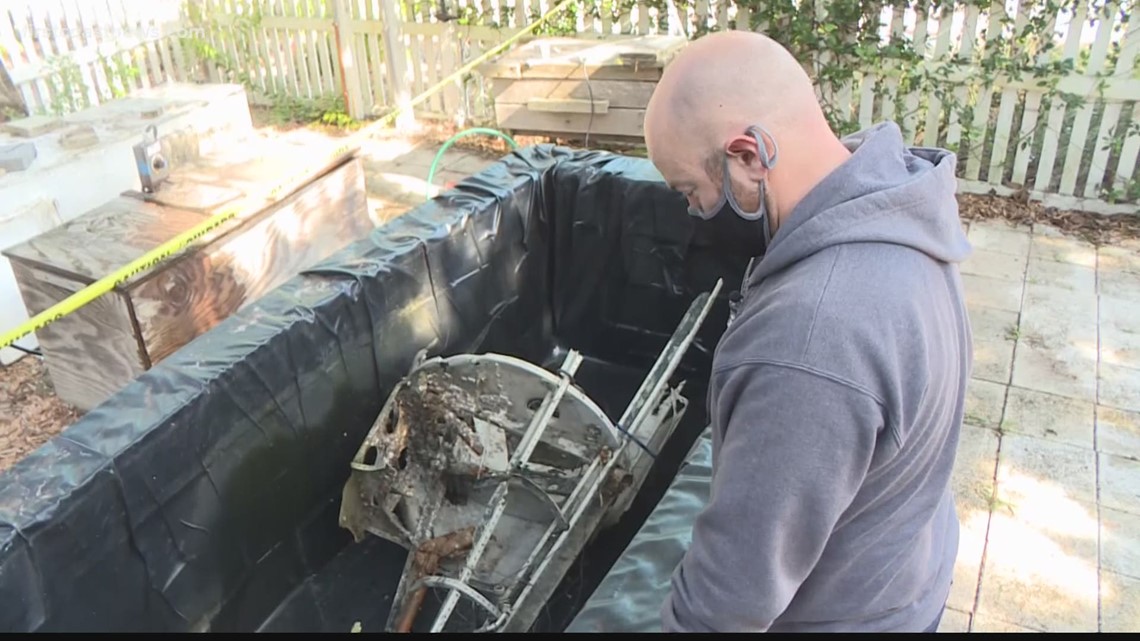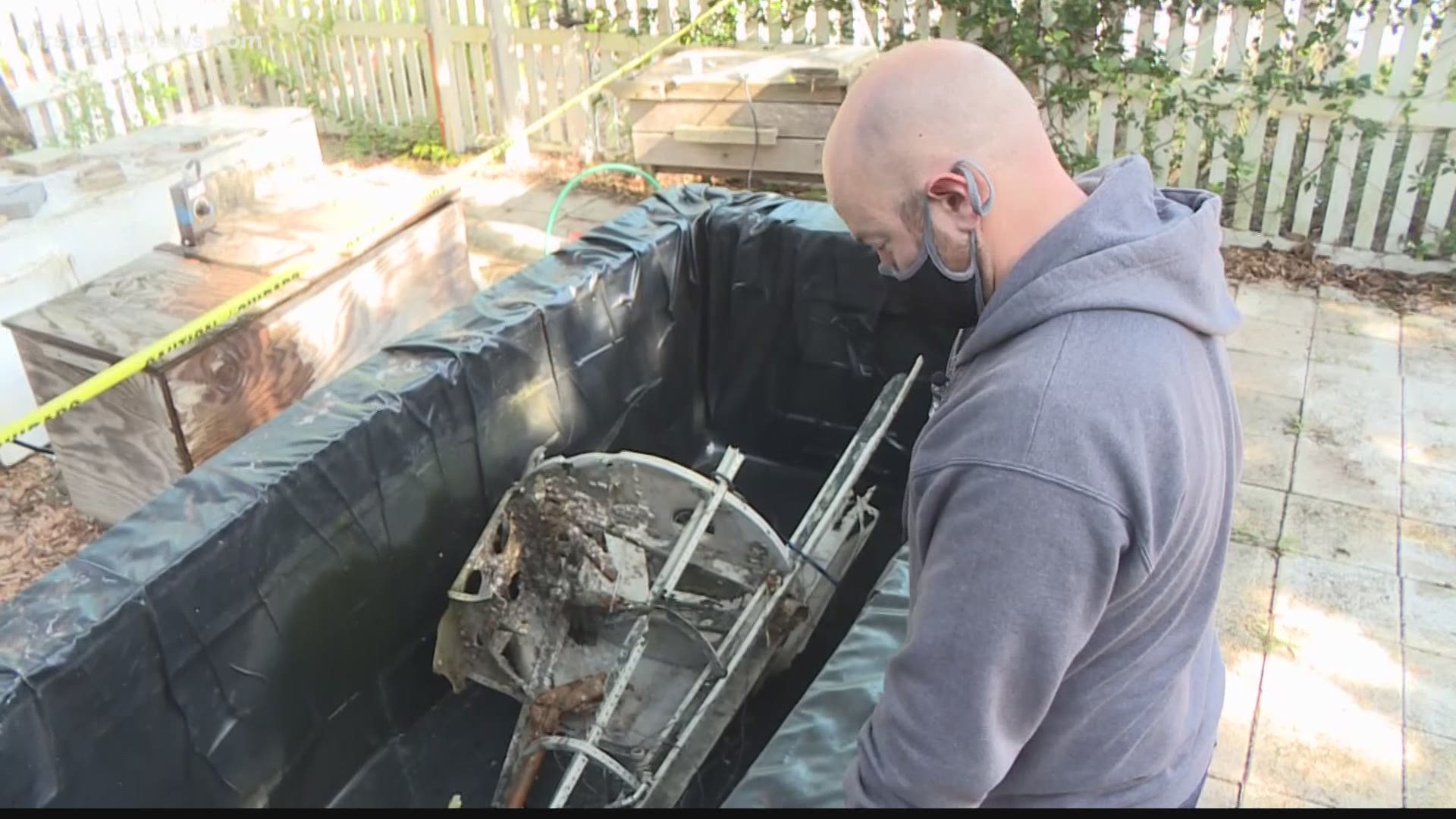ST. AUGUSTINE, Fla. — Part of a WWII plane that washed ashore in St. Johns County two months ago has been taking a long bath since then.
That's the best way to preserve it, according to conservation experts. So the tail section of the plane has been in a custom-built freshwater vat while researchers try to learn more about it.
Andrew Thompson, an expert on conserving waterlogged artifacts at the St. Augustine Lighthouse Archaeological Maritime Program, is now working to save this WWII find.
The 9.5-foot-long piece washed up on a St. Johns County beach in October and the U.S. Navy gave it to the St. Augustine Lighthouse Archaeological Maritime Program to protect for now.
Archaeologist Chuck Meide said navy historians are almost certain it belongs to a Grumman F4F Wildcat. "This was a common U.S. plane during WWII," he said.
Since it washed ashore, the team at LAMP has taken more than 800 photos of it in order to create a 3D model of it.
"What we have now is a very accurate replica," Archaeologist Nick Budsberg said, as he twisted the digital model around to see it from different angles on a computer screen.
A tail hook on the artifact was an indication that this plane took-off from and landed on aircraft carriers.
Thompson said, "That (tailhook) would’ve grabbed cables as it’s landing on the aircraft carrier to help it stop."
It’s believed this artifact is from a plane that crashed during a training accident out of Mayport.
"There were a lot of accidents," Meide said. The research team has looked at deck books from an aircraft carrier from Mayport during WWII, and "It looks like as many as once a week there was a crash. Sometimes the pilots survived. Sometimes they did not."
For Thompson, this tail section is a reminder of the danger that young men faced in Northeast Florida who were learning how to fly planes needed to win the war.
"It gives you a good appreciation to the bravery and ingenuity that was going on at the time," Thompson said.
The Navy will determine where the artifact will reside permanently. There is a good chance it could eventually be on display at the St. Augustine Lighthouse once it is completely studied and cleaned.



